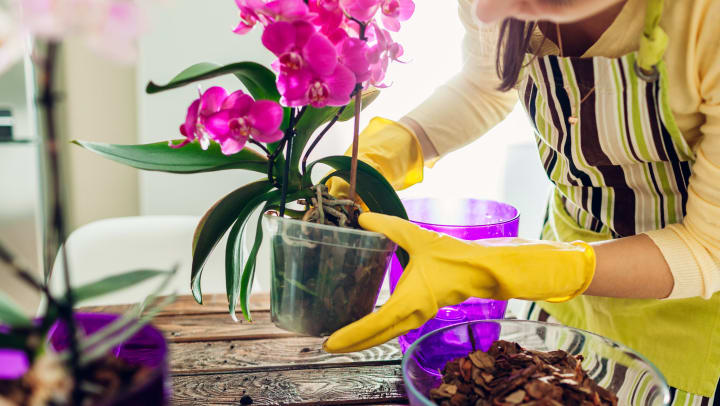Orchids have a bad rap. Despite their beauty, these glorious exotic flowers have a reputation as fussy and high maintenance plants that are more likely to die than rebloom. But orchids aren’t difficult, just different, and these easy orchid-care tips from Olympus at Daybreak in South Jordan, Utah, will help your orchids thrive.
Understanding Orchids
Orchids are not like traditional potted plants. Most are epiphytes which means they grow in the air rather than in dirt. In nature, most orchids grow on the bark of trees and need lots of fresh air to flow through their roots to be healthy. There are more than 22,000 species of orchids, but the following tips will benefit most common types of orchids including Phalaenopsis (moth orchids) and Dendrobium (cane orchids).
Avoid Direct Sunlight & Extreme Temperatures
Most orchids prefer a mild, warm, somewhat humid environment, and bright but indirect sunlight. So a north-facing windowsill or one that has a sheer curtain you can pull across to block direct sunlight is ideal. Avoid a spot where the orchid will be in the path of cold drafts.
Don’t Overwater
The biggest mistake people make with orchids is overwatering. They actually need very little water and most only need to be watered around once a week (although this can vary depending on the size of the potting container). Always wait to water until after the roots and potting medium have dried out completely from the last watering and drain the pot completely. Never leave an orchid standing in water, as this will cause its roots to rot and the plant will die.
Repot After Blooming
Most orchids are in bloom when you buy them. After the last blooms drop, snip off the old stems around two-thirds of the way to the base. Repot it in a plastic container that is perforated with small air holes and is around 25 percent larger than the original pot to allow for root growth. Use the bark-like orchid potting mix available at most garden stores and plant nurseries. Never use regular potting soil, as this will not allow enough airflow and will cause the roots to become waterlogged and suffocate.
When to Fertilize
Don’t fertilize your orchid while it’s blooming. Wait until after it has bloomed and then fertilize about once a month using an orchid fertilizer formulated for your orchid species or a weak solution of a balanced plant fertilizer (at around 25 percent of the recommended strength). Once a new spike emerges on your orchid, stop fertilizing until after the next blooms are finished.
Some orchids will only bloom once per year but the blooms typically last for several weeks to over a month. Others will rebloom twice or even three times per year. For more lifestyle tips, visit the Olympus at Daybreak blog.


